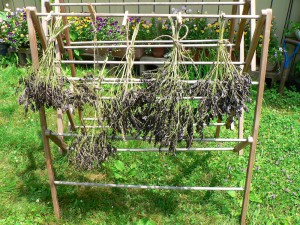After deciding that I would use a physical barrier to keep the flax varieties isolated, the next step was to design and build the isolation tents. I wanted to use supplies that could be re-used for other purposes in the future, which ruled out building cages with hammer and nails. Instead I bought 108 4-foot wooden stakes from Amherst Farmers Supply (four stakes for every little bed). To me this is a lot of stakes, and I thought I might have to place a special order, but no! They have literally thousands in stock, so I was able to pick them up the very same day I went in. Continue reading “Flax Pollination and Isolation Part Two”
Flax Pollination and Isolation Part One
I am so far behind on writing about my flax project that it’s hard to know where to start. If you and I have spoken in person since last Friday, you already know about my rodent apocalypse. However, rather than skipping too far ahead in the story here on my blog, I will try to reconstruct events chronologically in the next few posts. Continue reading “Flax Pollination and Isolation Part One”
Woad, Weld, Rain and Humidity
It is now mid-July, a time of year which is inevitably humid here in Massachusetts and often rainy. It is also a peak time of year for harvesting many dye plants. The problem is, when it’s humid and/or rainy, where do you hang them up to dry? Not outdoors….
Here are the woad seeds I saved from the dye plant and fiber plant garden at Bramble Hill Farm. This was from just two or three plants, harvested on July 2, 2015. We had been having a dry spell and they had almost entirely dried on the plants before I cut them off. Yes, I do already have a lifetime supply of woad seeds, and yes, they stay viable for a pretty long time. But here’s my crop of woad seeds for 2015. They are very beautiful, in my opinion.

